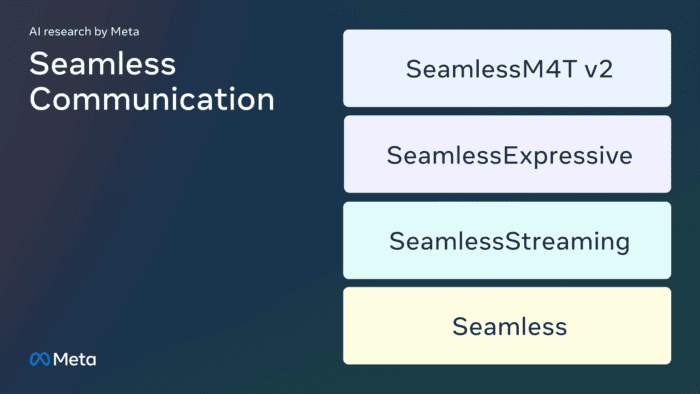Meta has recently launched a suite of AI language translation models called Seamless Communication, which consists of 4 AI models. This feature aims to enable more natural and authentic communication across languages. The suite includes three main models: SeamlessExpressive, SeamlessStreaming, and SeamlessM4T v2. These models are designed to preserve expression and intricacies of speech across languages. They also deliver speech and text translations with around two seconds of latency. Furthermore, it allows people to communicate effortlessly through speech and text.

Meta claims that the AI suite can “accurately reproduce the speaker’s emotions” and can achieve a delay of only 2 seconds. Simultaneous interpretation capability and support for nearly 100 language inputs. There are reports that Seamless Communication is a research result by Meta to celebrate the 10th anniversary of the establishment of its own AI research organization “Fundamental AI Research”.
Seamless Communication: A Breakthrough in AI Translation
Meta’s Seamless Communication is a significant step towards removing language barriers through expressive, fast, and high-quality AI translation. The suite of AI language translation models is designed to address the challenges of cross-lingual communication by preserving the expression and intricacies of speech across languages. The key models included in the Seamless Communication kit are SeamlessExpressive, SeamlessStreaming, and SeamlessM4T v2. Meta said that the suite includes the following
- “Second-generation SeamlessM4T model” for accelerated translation
- Interpretation model – “Seamless Expressive”,
- Simultaneous translation model – “Seamless Streaming”
The SeamlessM4T model claims to be able to automatically associate possible subsequent texts based on the user’s spoken content during translation to speed up translation.
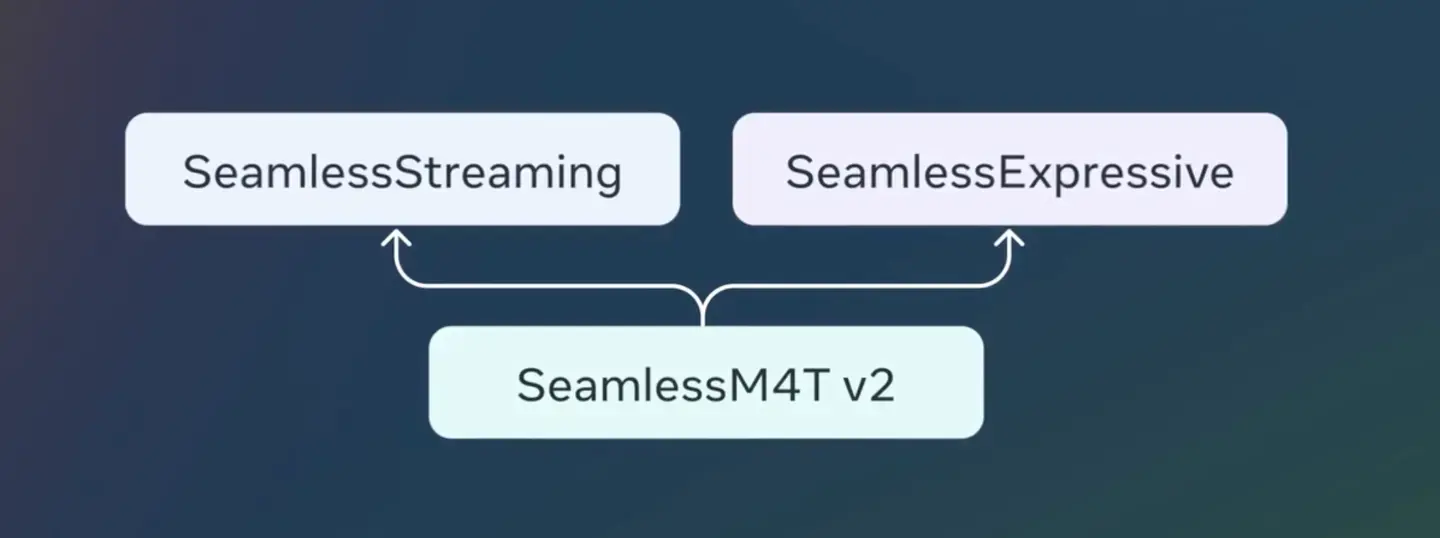
SeamlessExpressive
SeamlessExpressive is a model that aims to preserve the expression, emotion, and prosody of the speaker’s voice during speech-to-speech translation. This model focuses on capturing the nuances of human expression, which are often overlooked by existing translation tools. By preserving the vocal style and emotional nuances of the speaker’s voice, SeamlessExpressive enables more natural and authentic cross-lingual communication.
SeamlessStreaming
SeamlessStreaming is another key model in the Seamless Communication kit. It enables near real-time speech and text translations with only about two seconds of latency. Unlike conventional translation systems that wait for the speaker to finish their sentence before translating, SeamlessStreaming translates while the speaker is still talking. This feature allows for more seamless and natural conversations between speakers of different languages.
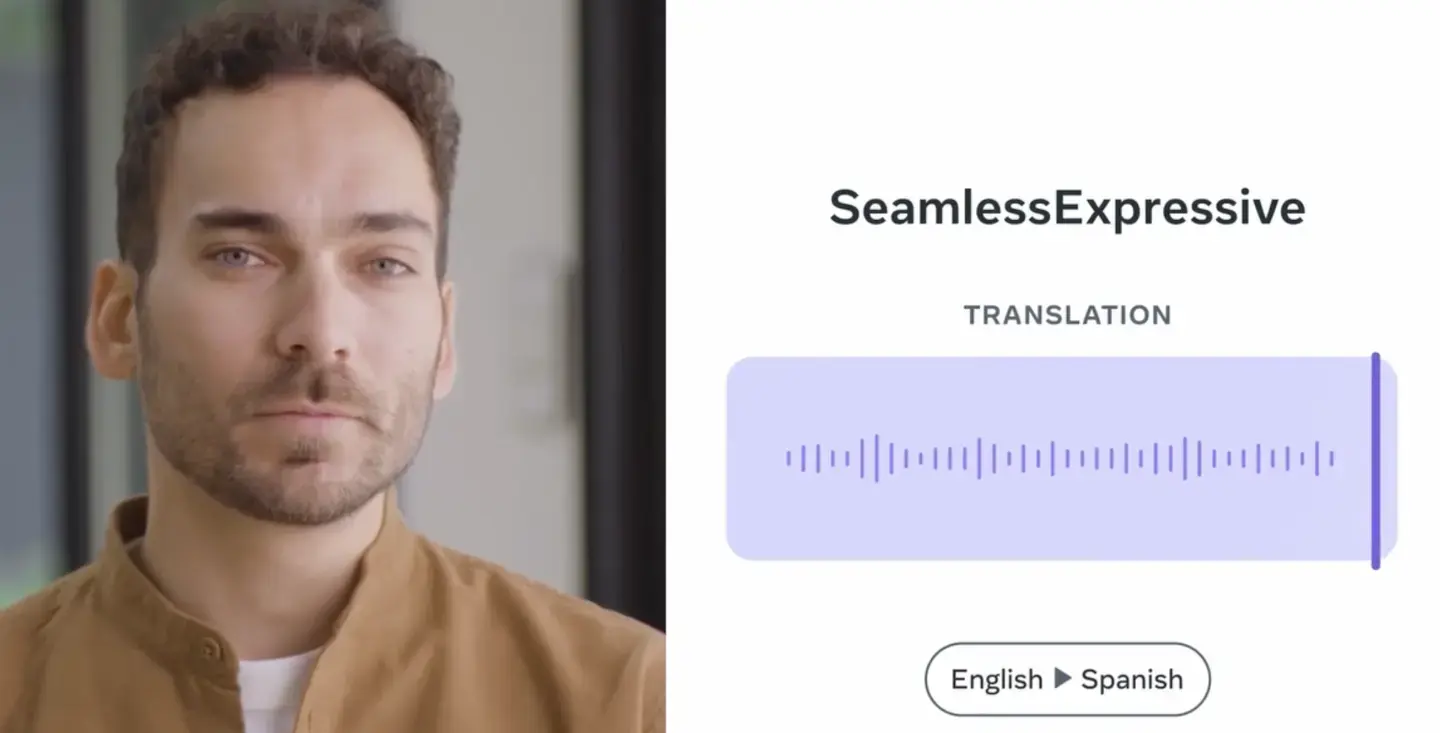
It supports oral translation (speech-to-speech translation), dictation translation (speech-to-text translation, S2TT) and automatic speech recognition (Automatic speech recognition). The comprehensive model Seamless integrates the three language models to facilitate universal scenarios.
Gizchina News of the week
SeamlessM4T v2
SeamlessM4T v2 serves as the foundational multilingual and multitask model that powers the other two models in the Seamless Communication kit. It is an upgraded version of the original SeamlessM4T model, delivering improved consistency between text and speech output. This model allows people to communicate effortlessly through speech and text across different languages, making it a crucial component of the Seamless Communication AI translation kit.
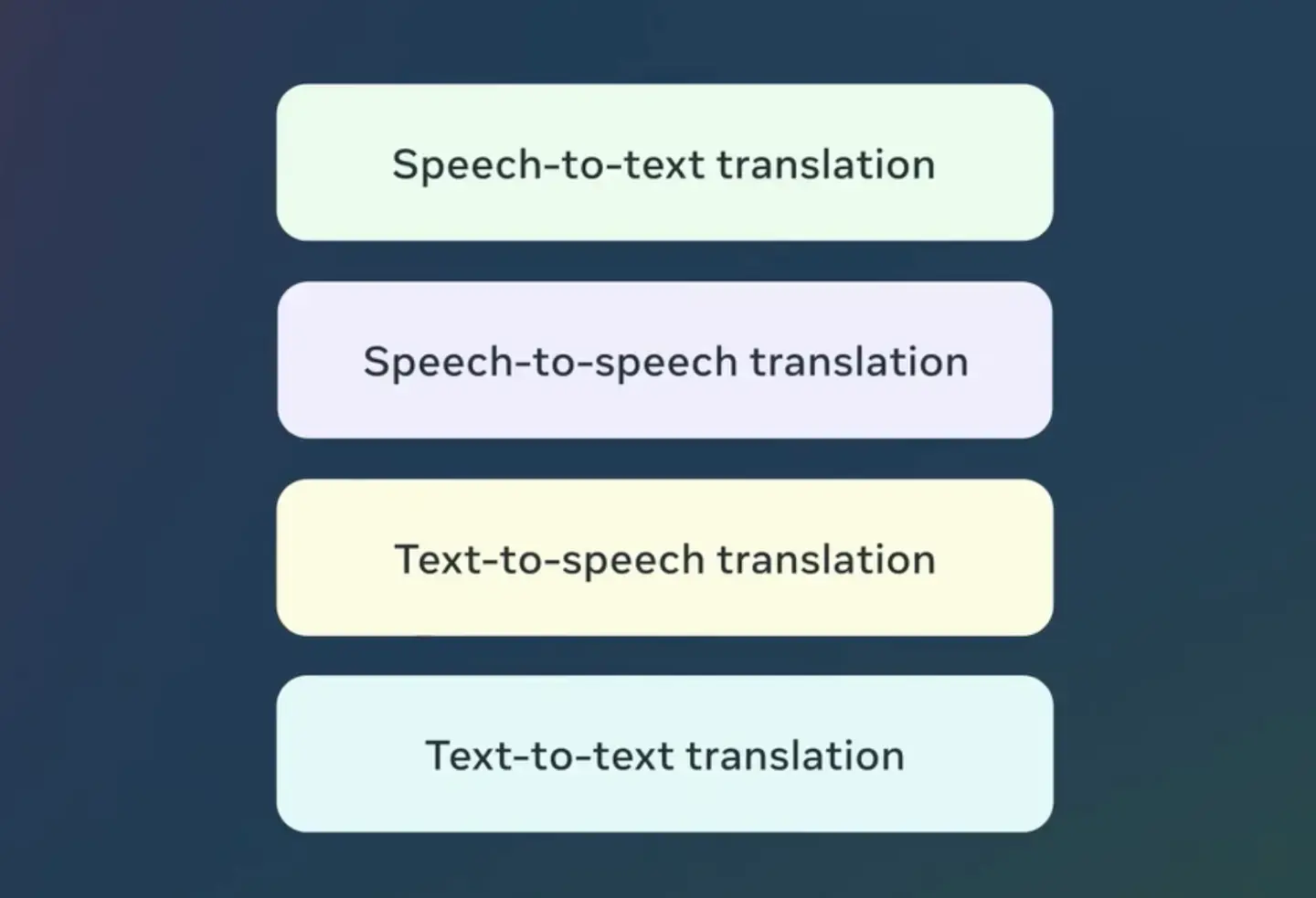
Impact of Seamless Communication
The launch of Meta’s Seamless Communication AI translation kit represents a significant advancement in the field of AI language translation. By enabling more natural and authentic cross-lingual communication, the Seamless Communication suite has the potential to break down language barriers and facilitate communication on a global scale. The key features of the Seamless Communication kit, such as preserving expression, enabling real-time translation, and supporting multilingual communication, make it a valuable tool for individuals, businesses, and organizations operating in multilingual environments.
In terms of the safety of this product, Meta said
“We’re dedicated to promoting a safe and responsible AI ecosystem. We have taken a number of steps to improve the safety of our Seamless Communication models; significantly reducing the impacts of hallucinated toxicity in translations, and implementing a custom watermarking approach for audio outputs from our expressive models.”
The company added
“We believe in the power of collaboration and open research to break down communication barriers. To enable our fellow researchers to build upon this work, we’re publicly releasing the full suite of Seamless Communication models, along with metadata, data and tools.”
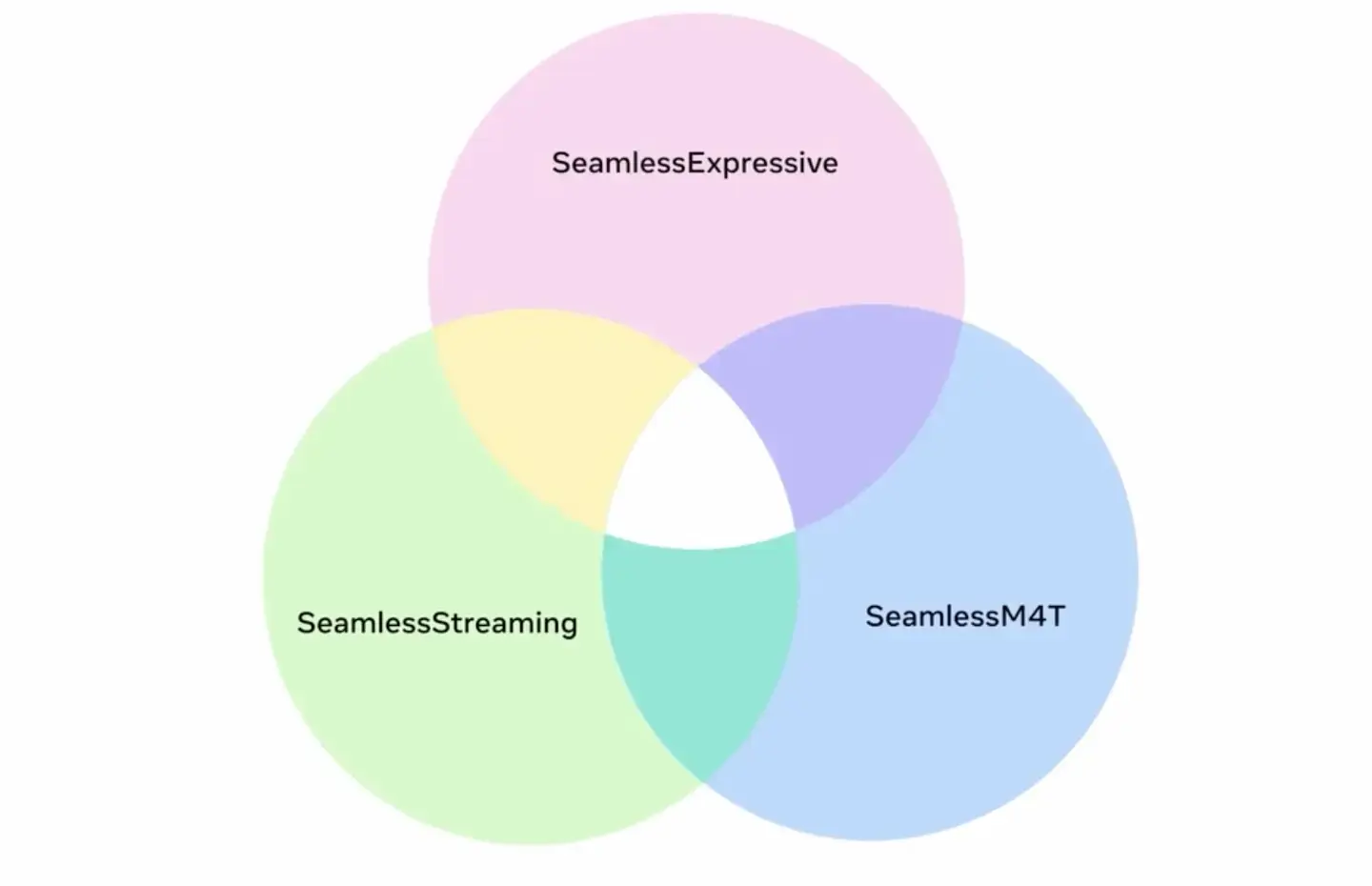
Final Words
Meta’s Seamless Communication AI translation kit is a groundbreaking development that has the potential to transform the way we communicate across languages. By preserving expression, enabling real-time translation, and supporting multilingual communication, the Seamless Communication suite represents a significant step towards a more connected and inclusive global community.
According to Meta, AI tools can help bring nations around the world closer together. However, the company needs to add safety features to prevent imitation and other forms of abuse at work. For this reason, Meta has added a watermarking method that is more reliable than passive discriminators. Meta claims its watermarking method is more efficient at distinguishing synthetic voices from human voices. Watermarking actively embeds a signal that is unnoticed by the human ear but detectable using a detector model into the audio. The origin of the audio can be properly traced with this watermark. Establishing a verifiable audio provenance promotes the right use of voice preservation tools and helps prevent potential abuses.
What do you think about this new feature from Meta? Let us know your thoughts in the comment section below.
Author Bio
Efe Udin is a seasoned tech writer with over seven years of experience. He covers a wide range of topics in the tech industry from industry politics to mobile phone performance. From mobile phones to tablets, Efe has also kept a keen eye on the latest advancements and trends. He provides insightful analysis and reviews to inform and educate readers.

